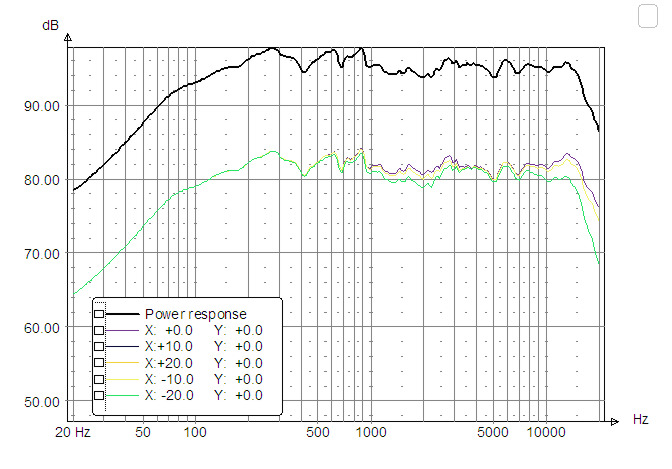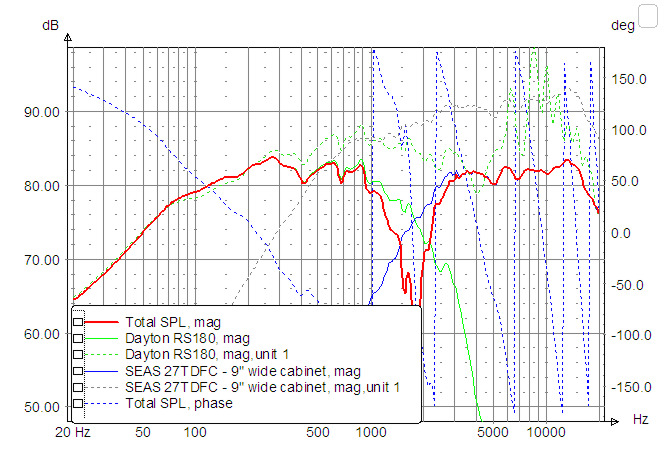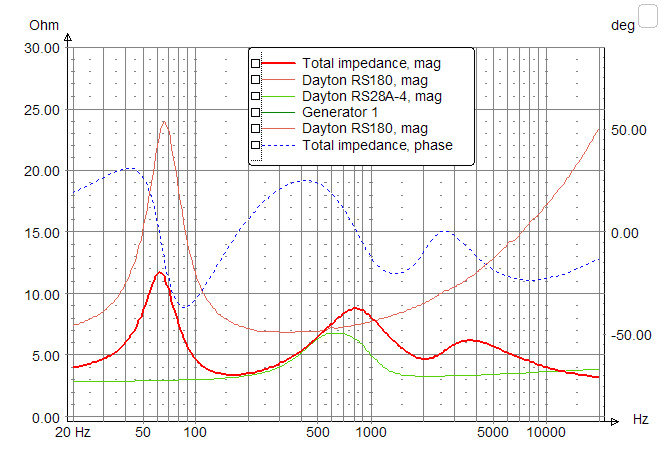This will be my third speaker building project. The first two I consider complete failures. I was never satisfied with them and I could never discover exactly why. So this time I am going to go more slowly, and ask for help along the way. I am bound and determined to get a speaker that I enjoy listening to out of this project!
I am planning on posting detailed build info to my blog here: http://www.cmhaudio.com/ but I will try to copy and paste any pertinent info here when asking specific questions so you don't have to flip back and forth.
Here is what I have so far!

Here is my first question: Is my box too small?

This is the basic tuning info. The box is .5 cubic feet and tuned to 42hz with a 2" precision port. I am worried that the x-max is crossed with only about 4 watts (the plot goes from 1-32 watts) under 30hz. I originally wanted a smallish speaker (I didn't realize how large .5 ft^3 is even) but now I am thinking that a larger box and lower tuning might be able to keep the woofer from unloading in the audio band. The scale of the group delay is not shown in the graph, but each line is 5ms. So the GD peaks at 15ms just under 30hz, but is down below 10ms by 40hz. Let me know if you think this tuning will sound ok, or if I should go a different direction before doing much more.
Also, on a related note. The end of my precision port is only about 2" from the back of my tweeter. I was thinking I had about 3", but that was to the baffle and when I was attaching everything I realized that the tweeter is really close to the inside port opening. Is this going to be a problem?

This is the modeled vs. measured impedance of the unit. My thought was that if they were drastically off then I would blame the port restriction, but they look pretty close to me. Does that mean I am in the clear as far as the port is concerned or will it start to make a bigger difference as volume goes up (the impedance was done at a pretty low level)?
And one more picture just because I cant resist:

Thanks in advance!
-Chad
I am planning on posting detailed build info to my blog here: http://www.cmhaudio.com/ but I will try to copy and paste any pertinent info here when asking specific questions so you don't have to flip back and forth.
Here is what I have so far!

Here is my first question: Is my box too small?

This is the basic tuning info. The box is .5 cubic feet and tuned to 42hz with a 2" precision port. I am worried that the x-max is crossed with only about 4 watts (the plot goes from 1-32 watts) under 30hz. I originally wanted a smallish speaker (I didn't realize how large .5 ft^3 is even) but now I am thinking that a larger box and lower tuning might be able to keep the woofer from unloading in the audio band. The scale of the group delay is not shown in the graph, but each line is 5ms. So the GD peaks at 15ms just under 30hz, but is down below 10ms by 40hz. Let me know if you think this tuning will sound ok, or if I should go a different direction before doing much more.
Also, on a related note. The end of my precision port is only about 2" from the back of my tweeter. I was thinking I had about 3", but that was to the baffle and when I was attaching everything I realized that the tweeter is really close to the inside port opening. Is this going to be a problem?

This is the modeled vs. measured impedance of the unit. My thought was that if they were drastically off then I would blame the port restriction, but they look pretty close to me. Does that mean I am in the clear as far as the port is concerned or will it start to make a bigger difference as volume goes up (the impedance was done at a pretty low level)?
And one more picture just because I cant resist:

Thanks in advance!
-Chad





















Comment